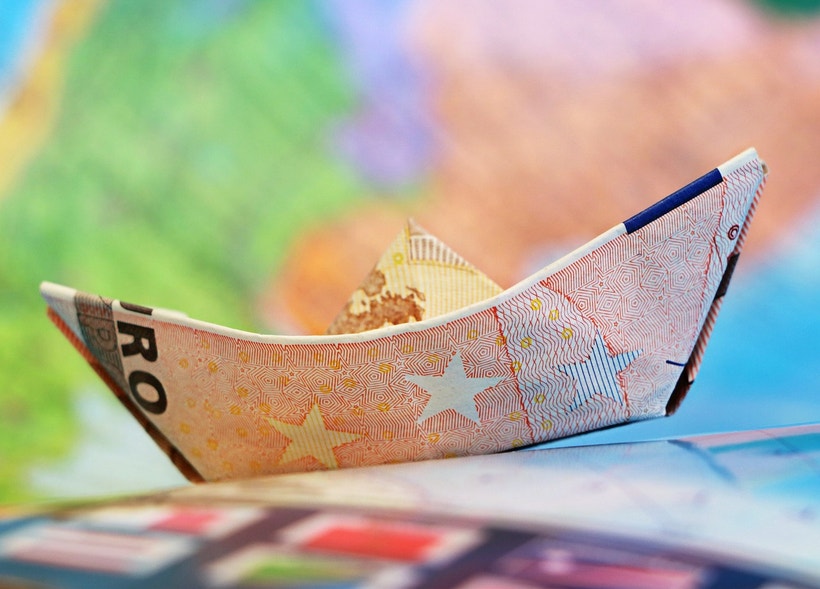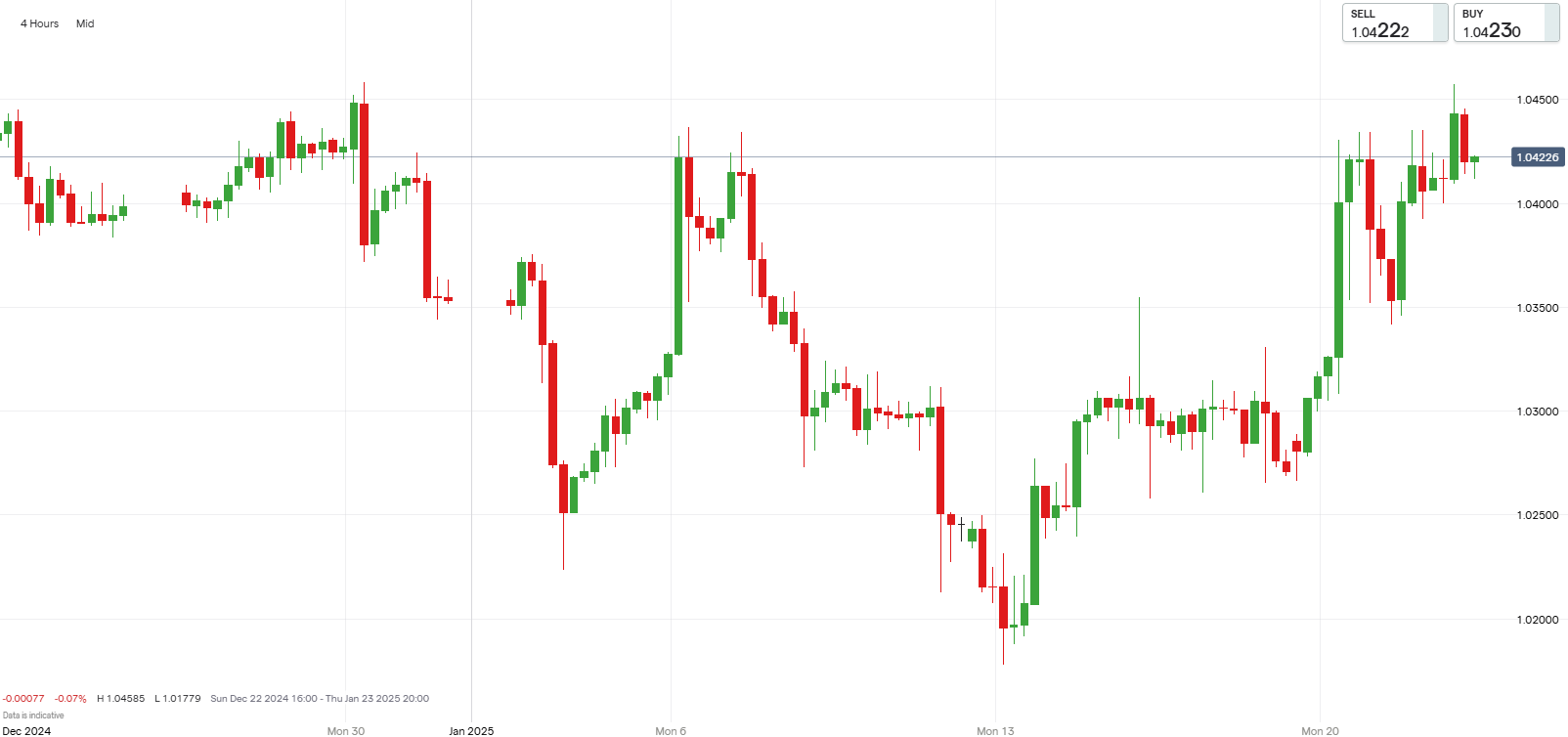EUR/USD gains amid EU Trump tariff fears
The euro strengthens as Trump delays strict tariffs; EU leaders push for unity. Meanwhile, the ECB plans rate cuts, and traders keep an eye on US-EU trade tensions and Fed policy shifts.

Key points
- EUR/USD rises to 1.0457 as Trump delays strict tariffs
- Macron and Scholz advocate EU unity against US trade threats
- Dollar index steady at 108.1 amid tariff uncertainty
- ECB expected to cut rates by 25 basis points next week
- Traders monitor US-EU trade tensions and Fed rate cut expectations
EUR/USD hits above 1.0450
The euro rose to 1.0457, marking a five-week high, as markets responded positively to President Donald Trump's decision not to impose strict tariffs at the start of his term. Initially, investors worried that his protectionist policies might impede global growth and raise US inflation. However, Trump's focus on pro-business measures has improved market sentiment. Despite this optimism, Trump criticized the EU and hinted at possible future tariffs, leading ECB President Christine Lagarde to urge Europe to prepare for potential trade actions. Lagarde commended Trump's decision to delay blanket tariffs. Meanwhile, the ECB is expected to continue easing its monetary policy, with a 25-basis points rate cut anticipated at next week's meeting.
EUR/USD price history

EU responds strongly to Trump’s inauguration speech
French President Emmanuel Macron and German Chancellor Olaf Scholz met in Paris to emphasize European unity in response to U.S. tariff threats from President Donald Trump. Both leaders stressed the importance of a united front in dealing with Trump's challenges, particularly as the U.S. targets Europe's trade surpluses. They highlighted critical sectors, such as steel and automobiles, that might face U.S. tariffs. Despite political challenges at home, Macron and Scholz aim to strengthen Franco-German relations, seen as crucial for the EU's cohesive response. While some view Trump's tariff threats as negotiation tactics, others fear he might enforce them due to strong support in the US. With EU countries experiencing higher energy costs and reduced Chinese trade, Trump’s potential tariffs add to their economic concerns.
Dollar remains strong amid foreign policy uncertainty
The dollar index remained strong at around 108.1 as uncertainty persisted over US President Donald Trump's tariff plans. Trump suggested a 10% tariff on Chinese imports starting February 1, following threats of 25% tariffs on Mexico and Canada. However, these statements have yet to be carried out, raising many investors’ hopes for a more cautious approach. The dollar has been rising since October 2024, fueled by the beliefs that Trump's "America First" policies might increase inflation. This could hinder the Federal Reserve from making further rate cuts. Nonetheless, markets anticipate a Fed rate cut by July, with another possible reduction later in the year.
What’s next for EUR/USD?
Looking ahead, the EUR/USD pair's trajectory will likely be influenced by several factors. The European Central Bank (ECB) is expected to maintain its easing monetary stance, with a 25-basis points rate cut on the horizon, which could weigh on the euro. At the same time, the US dollar remains strong due to persistent uncertainty over Trump's tariff plans and the potential for inflationary pressures from his "America First" policies. However, expectations of Federal Reserve rate cuts later in the year could cap the dollar's gains.
For the EUR/USD pair, much depends on how the US administration's trade policies unfold and whether the ECB's monetary policy adjustments can stabilize the euro. If Europe can present a united front against US tariffs and manage its economic challenges effectively, the euro may gain further support. Conversely, any escalation in US-EU trade tensions or a stronger dollar could pressure the EUR/USD downwards. Traders should keep a close eye on geopolitical developments and central bank actions for cues on potential movements in the pair.
More where that came from: check out what’s new in forex today on our YouTube channel
How to trade EUR/USD
- Open an account to get started, or practice on a demo account
- Choose your forex trading platform
- Open, monitor, and close positions on EUR/USD
Trading forex requires an account with a forex provider like tastyfx. Many traders also watch major forex pairs like EUR/USD and USD/JPY for potential opportunities based on economic events such as inflation releases or interest rate decisions. Economic events can produce more volatility for forex pairs, which can mean greater potential profits and losses as risks can increase at these times.
You can help develop your forex trading strategies using resources like tastyfx’s YouTube channel. Our curated playlists can help you stay up to date on current markets and understanding key terms. Once your strategy is developed, you can follow the above steps to opening an account and getting started trading forex.
Your profit or loss is calculated according to your full position size. Leverage will magnify both your profits and losses. It’s important to manage your risks carefully as losses can exceed your deposit. Ensure you understand the risks and benefits associated with trading leveraged products before you start trading with them. Trade using money you’re comfortable losing. Past performance is not indicative of future results.
